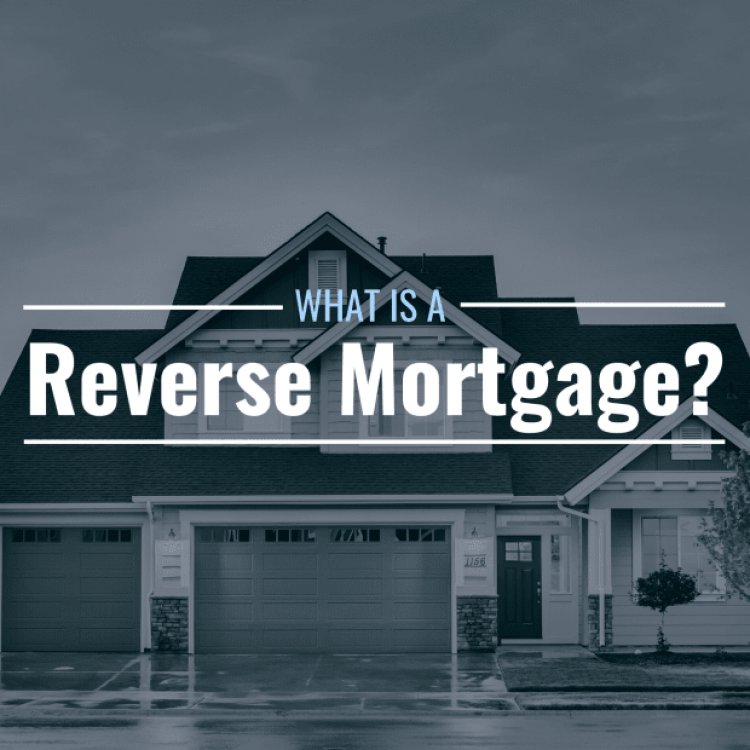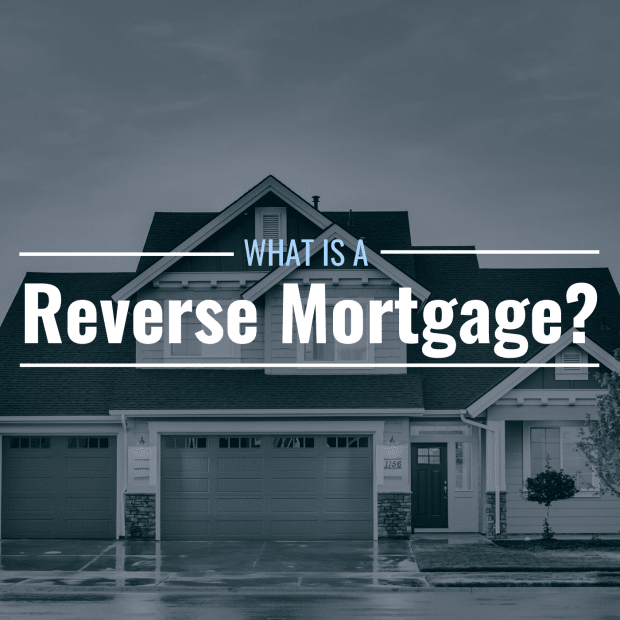What Is a Reverse Mortgage and What Does It Mean to Me?
Reverse mortgages are a unique financial tool for unique financial needs. Can they work for you?

Reverse mortgages are a unique financial tool for unique financial needs. Can they work for you? Binyamin Mellish from Pexels; Canva
A reverse mortgage is an increasingly attractive proposition for older Americans who may be low on cash, need to supplement retirement income, and want to use their home equity to remain in the house they own.
Reverse mortgages are loans that enable U.S. homeowners over the age of 62 to cash in on the equity built up in their home, via a reverse mortgage lender.
That's a tempting opportunity in an age where millions of U.S. seniors are struggling to save enough money for retirement. Data from AnytimeEstimate shows that 56% of Americans believe they will outlive their retirement savings and 16% of Americans have saved zero dollars for retirement.
Even so, there are some risks involved in cutting a deal on a reverse mortgage (otherwise known as a home equity conversion mortgage.) Such mortgages are supervised by the U.S. Federal Housing Administration, an arm of the Department of Housing and Urban Development, so there is some level of regulatory scrutiny.
A closer look at reverse mortgages may provide some answers for Americans approaching their golden years, but lack adequate retirement savings. Let's kick some tires on reverse mortgages and see if there is a scenario in which this financial product makes sense for you.
What Is a Reverse Mortgage?
Reverse mortgages are geared toward older U.S. homeowners who have accumulated a healthy chunk of home equity on their properties, and wish to leverage that value into retirement income. These mortgage products are the polar opposite of traditional mortgages, where mortgage payments are primarily paid on a forward and monthly basis until the mortgage loan is fully repaid.
Although that homeowner still has to pay property taxes and insurance on the home, unlike a regular, forward-modeled mortgage, reverse mortgage holders accept payments from a lender but don't need to repay the money until he or she leaves the home or dies.
What homeowners lose with a reverse mortgage is the value of their home equity, which declines over the course of a reverse mortgage loan. Instead, the mortgage loan balance increases over time until the loan is either paid off or leaves the home (in the vast majority of cases, a reverse loan is paid off when the homeowner sells the property.)
Note that reverse mortgages are not the same as bank-sponsored home equity loans or home equity lines of credit. Unlike those mortgage-based financial instruments, a reverse mortgage does not require the borrower to make monthly payments (instead, they actually receive them.) With a home equity loan, the borrower pays down the loan monthly, at a fixed sum, until the loan is repaid.
Five Things to Know About Reverse Mortgages
Get to know reverse mortgages on a more detailed basis, with these five "must-knows."
1. Eligibility Factors for Reverse Mortgages
By and large, it's fairly easy to qualify for a reverse mortgage. You can do so if you clear the following hurdles:
- You are 62 years of age, or older.
- You own your home and live on the premises
- Your home is a single-family home, a multi-family home (capped at four families on the property), or select condominiums.
- You either have paid off your mortgage loan outright and own your own home, or you are close to doing so.
- Your property is in solid condition (the lender will check before agreeing to the loan.)
Per Uncle Sam's mandates, any reverse mortgage borrower must meet first with a government-approved financial specialist (HUD will have to give the specialist the green light) to ensure the reverse mortgage is a good fit, and that the borrower isn't taking on undue risk.
Borrowers should take these sessions as a valuable learning tool, and use them to weigh the risks and opportunities of taking out a reverse mortgage.
2. You'll Need to Clear Some Financial Hurdles
Any potential reverse mortgage borrower must demonstrate their ability to hold up their side of the financial transaction.
For example, a borrower must prove to the lender that he or she can:
- Pay their property taxes.
- Pay their homeowner's insurance.
- Maintain the home in good fashion.
- Pay any association or homeowner's fees.
3. Borrowing Limits for Reverse Mortgages
Your loan amount varies with a reverse mortgage. The formula lenders use is based on the borrower's age, the value of the home, and the loan interest rate.
Age may be the biggest factor when mulling how much to borrow on a reverse mortgage. Basically, the older a homeowner is, the more he or she can borrow from a reverse mortgage lender (that's because the older reverse mortgage consumer at, for example, age 82, is more likely to pass on or sell the home relative to a reverse mortgage consumer who is, say, 62 years of age.
Additionally, the more your home is worth, and the more equity you have in the home, the more you can borrow from a reverse mortgage lender. That's due to the scale lenders use when issuing reverse mortgage loans. More value and more equity is viewed as a better credit risk, and lenders are more comfortable clearing loans on that basis.
4. How Loan Money is Disbursed
Reverse mortgage borrowers can get their loan money paid out in various ways, including:
- Via a lump-sum payment. Reverse mortgage borrowers with fixed-interest rate loans can get their payout as a lump sum when the loan closes.
- Via monthly "tenure" payments. Loan borrowers can get their cash via monthly, fixed payments, as long as the reverse mortgage borrower remains in the home.
- Via term payments. Borrowers can also get monthly payments over a fixed period of time.
- As a line of credit. Reverse mortgage borrowers can also get paid out with a line of credit and draw down funds until the account is depleted.
Over the course of a reverse mortgage loan, the borrower may take payment in multiple forms, using the payouts listed above. Check with your reverse mortgage lender to see what options are available to you.
5. You'll Pay Fees
Reverse mortgages aren't immune from fees, and borrowers should understand them and see if and when they apply.
Basically, the main reverse mortgage fees are as follows:
- Origination fees. These fees are paid out at the loan's closing, and are fixed at a fee rate of between $2,500 and $6,000, and are regulated by the U.S. government. The formula for origination fees is based on 2% of the first $200,000 of the loan, and 1% thereafter.
- A third-party fee. Like a regular home loan, third-party fees are part and parcel of a reverse mortgage loan. Title fees, appraisal fees, any potential home inspection fees also must be covered with a reverse mortgage
- Mortgage insurance premium fee. This fee, payable upfront to the U.S. Federal Housing Administration, amounts to 2% of the entire loan value. The fee is paid to the FHA for a good reason— it's an insurance policy of its own for the backup Uncle Sam gives to reverse mortgage loan borrowers.
Are Reverse Mortgages Right for You?
A reverse mortgage is a unique financial instrument meant for specific consumers.
Studies show that Americans who have reverse mortgages generally approve of the experience, and most reverse mortgage consumers say they received the amount of money they expected to receive, and that the money lasts either as long as expected or even longer.
If you're considering a reverse mortgage but aren't sure if or how to proceed, make an appointment with an FHA-approved counselor. These specialists are trained to counsel older Americans thinking on reverse mortgages, and can spell out any risks and rewards that may be unique to your personal circumstances.
What's Your Reaction?



























































